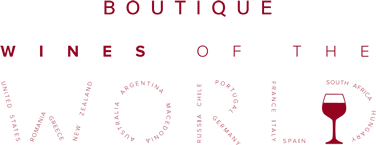Amazing title
For as long as wine has been made, wine has been manipulated, adulterated and counterfeited. In ancient Rome, Pliny the Elder complained about the abundance of fraudulent Roman wine which was so great that even the nobility could not be assured that the wine they were pouring on their table was genuine. For the poor and middle class of Rome, local bar establishments seemed to have an unlimited supply of the prestigious Falernian wine for unusually low prices. As wine is technically defined as the product of fermented grape juice, the term “wine fraud” can be used to describe the adulteration of wine by substances that are not related to grapes. This can refer to the use of elderberry juice, or flavorings such as cinnamon and ginger. While some varieties of wine can naturally have deep, dark color and flavor notes of spices due to the presence of various phenolic compounds found, the use of additives to artificially create these characteristics is generally frowned upon in the wine world.
Title
In recent years, much attention has been focused on the label fraud, where counterfeit labels from cult wines and other rare and expensive wines are affixed to bottles of less expensive wine and then resold. Wine fraud can involve less expensive wines if they are sold in large volumes. Wine Spectator noted that some experts suspect that as much as 5% of the wine sold in secondary markets could be counterfeit.Over the years, winemaking techniques have evolved. The first, primitive “natural wine” or “authentic wine” was most likely the result of crushed grapes being forgotten while stored in a container.
Custom color & style
The process of allowing wild yeast conduct fermentation in an uncontrolled environment creates a very crude style of wine that may not be palatable to many people. Hence the development of various techniques and practices designed to improve the quality of the wine but which could be viewed as “manipulating” or “adulterating” the wine from its natural or “authentic state”.
Text positioning
At various points in history, these technique may be considered too much manipulation, more than what a consumer would likely expect, and thus labeled as “fraud”. However as these techniques became more common place in the wine industry, an air of acceptability followed and they eventually became just another tool in the winemaker’s tool box to help craft quality wine.
5 icon sizes
Most techniques of manipulation arose from need. Early wine had many wine faults that caused a wine to spoil quickly. Classical writings from the Greeks and Romans detailed recipes that could cure “sick wines”. These include adding various items like milk, ground mustard, ashes, nettles and lead.
Icon’s placement toward the title
Another example of early “manipulation” that became accepted, common practice was the process of adding grape spirit to wine made in the Douro region of Portugal. This process of fortification gave the wine chemical stability for long sea voyages and left the wine with a balance of residual sugar and alcohol content that gave the wine a unique taste.
Custom fonts / image icon
Other winemaking techniques include chaptalization, fermenting and aging in oak barrels, using oak chips, stirring lees, racking, clarification and filtration, reverse osmosis, cold maceration, the use of cultured instead of wild yeast, cryo-extraction, micro-oxygenation and the addition of enzymes, anti-oxidant agents, acids hat may be used to “balance” the wine.
